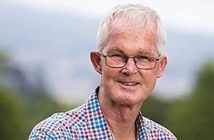Anyone who has tramped in New Zealand’s national parks or driven through jaw-dropping South Island scenery has observed first hand largely pristine wilderness, with millions of hectares of native bush and mountains left much as the country was when the first humans arrived.
At the other end of the spectrum, urban environments focused on meeting human needs are concreted and tar-sealed, with buildings in place of trees.
Between the two extremes, we have our rural areas and farms, where humans have caused some degradation, but there is still space for wildlife and nature to flourish.
While New Zealand is recognised as the world’s most sustainable food producer, the release of the Climate Change Commission’s recommendations around limiting carbon emissions is perhaps a good prompt for us to ask, “What are the next steps for rural land – the land between these extremes?”
In this rural area, New Zealand produces enough food for 40 to 50 million people, while at the same time keeping the human impact on the landscape to a minimum.
As the world’s population increases and more focus is put on food production as well as offsetting climate change, we can see a growing tension between the need to keep people alive and the benefits of land preservation.
One of the underlying drivers is the threat of overall biodiversity loss. Every country in the world is facing this, and there’s a direct correlation between people and the amount of land we take up and the loss of natural habitat, with 25 percent of the world’s species predicted to become extinct within the next century.
Until now, commercial drivers have underpinned changing land use; this is reflected, for example, in the dramatic drop in the number of sheep farmed in New Zealand in the 1980s in response to the elimination of government subsidies and dropping wool prices. On the other side of the ledger, good incomes from dairying have spurred New Zealand to become the eighth-largest milk producer in the world.
Questions to debate could include considerations such as how we work together to strengthen our economy and support Kiwis to prosper while protecting our natural environment and our climate.
Would we change our view on land use from a regional to a national perspective?
If we took a broader approach to land, would understanding and consideration of soil attributes and soil health impact the way we manage urban growth?
Are there opportunities to trial more diverse farming systems that explore farm types based on an informed, considered use of land and water?
It may even be useful to take a lesson from evolving approaches to city planning, where district and regional plans create zones for industry, high-density housing and apartments, and commercial and heritage precincts.
This could allow land to be zoned into pine plantations and planting for carbon sinks, intensive farming districts for the production of high-quality food more sustainably than is possible in other countries, and more-sensitive areas for lighter farming.
Land ratings could take into account values such as recreational potential, productive capabilities, and ability to protect and nurture unique flora and fauna.
Perhaps land with higher environmental values could be used to offset degradation of land that is being used for higher-density food production, in much the same way as airlines use tree plantations to offset travel emissions.
Acknowledging the impact that humans have already had on the land and accepting that much of this degradation cannot be undone, is it time to be more pragmatic with our attitude to changing land use? Would this more targeted approach enable New Zealand to focus on its strengths, including fertile farmland, a low population and world-leading sustainability practices? Is it time to make informed and rational compromises?
The utopia of protecting water quality in all productive farmland, as stipulated in legislation based on the Te Mana o te Wai concept within the National Policy Statement for Freshwater Management, is unlikely to be at all possible.
Kiwis are grappling with the rate of change and the need to balance providing carbon sinks and pollution-free environments with optimising food production to meet consumer demand and the growing requirement for urban land.
Given that it’s impossible to have productivity without impact, now is a good time to debate how much impact we as a nation are prepared to accept, and where the pendulum settles.
Dr Jamie Blennerhassett is Innovation Leader at Ballance Agri-Nutrients. Ballance is a New Zealand farmer-owned co-operative, supporting Kiwis to farm productively, profitably and sustainably.





